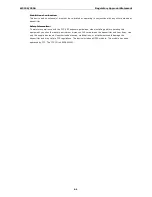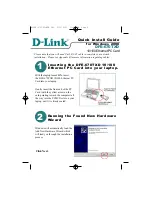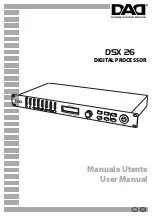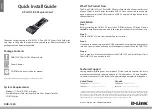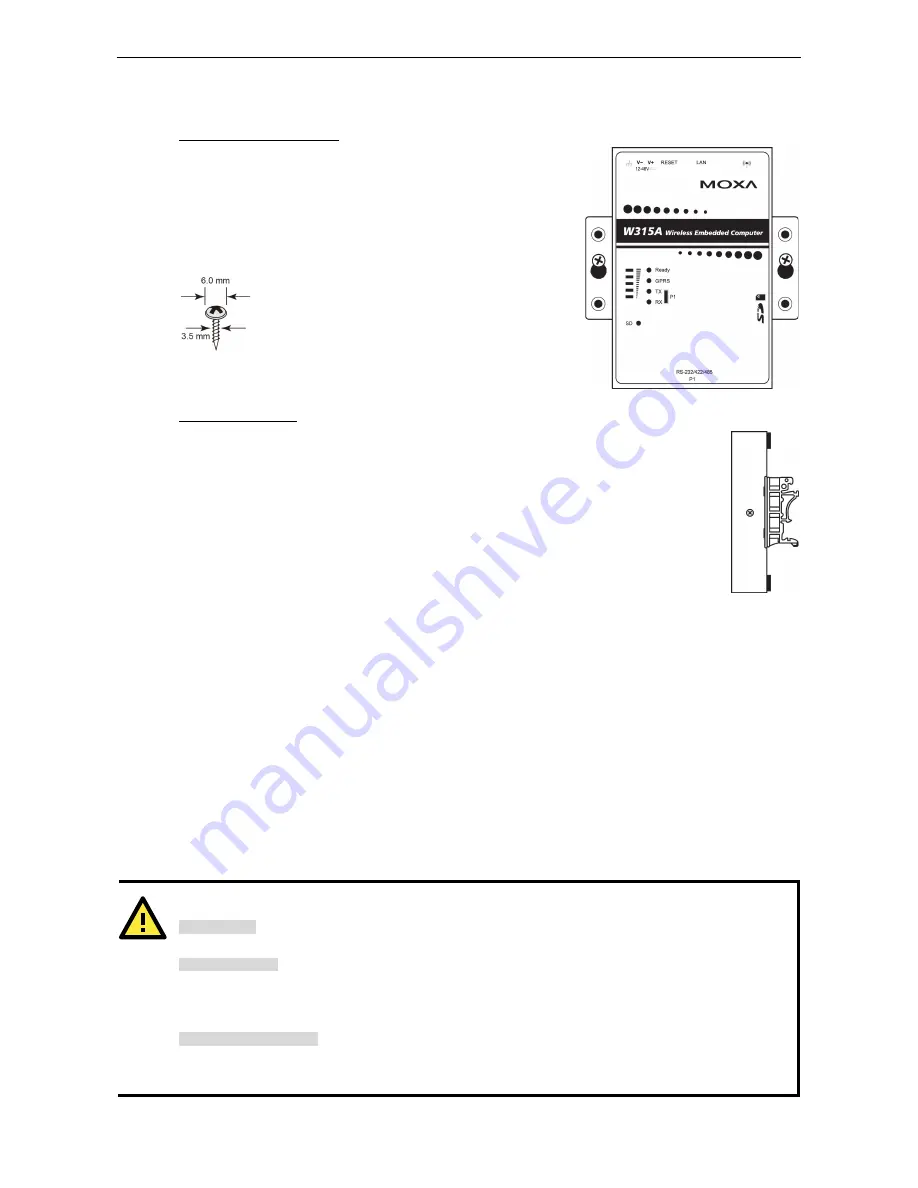
W315A/325A
Hardware Connection Description
3-2
Installing the W315A/325A
Wall or Cabinet Mounting
The W315A/325A embedded computers have built-in “ears” for
attaching the embedded computers to a wall or the inside of a cabinet.
We suggest using two screws per ear to attach the W315A/325A to a
wall or cabinet.
The heads of the screws should be less than 6.0 mm in diameter, and
the shafts should be less than 3.5 mm in diameter.
DIN-Rail Mounting
DIN-rail attachments can be purchased separately to attach the product to a DIN-rail. When
snapping the attachments to the DIN-rail, make sure that the stiff metal springs are at the top.
Wiring Requirements
In this section, we describe how to connect serial devices to the embedded computer. Read and follow these
common safety precautions before proceeding with the installation:
•
Use separate paths to route wiring for power and devices. If power wiring and device wiring paths must
cross, the wires should be perpendicular at the intersection point.
NOTE: Do not run signal or communication wiring together with power wiring in the same wire
conduit. To avoid interference, wires with different signal characteristics should be routed
separately.
•
Use the type of signal transmitted through a wire to determine which wires should be kept separate. The
rule of thumb is that wiring that shares similar electrical characteristics can be bundled together.
•
Keep input wiring and output wiring separate.
•
It is a good idea to label the wiring to all devices in the system.
ATTENTION
Safety First!
Be sure to disconnect the power cord before installing and/or wiring your W315A/325A.
Wiring Caution!
Calculate the maximum possible current in each power wire and common wire. Observe all electrical codes
dictating the maximum current allowable for each wire size. If the current goes above the maximum ratings,
the wiring could overheat and cause serious damage to your equipment.
Temperature Caution!
Be careful when handling the unit. When the unit is plugged in, the internal components generate heat, and
consequently the outer casing may feel hot to the touch.



















